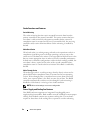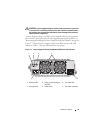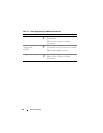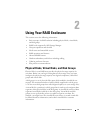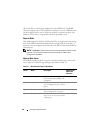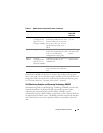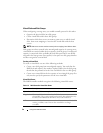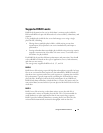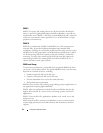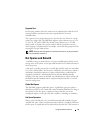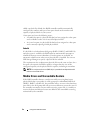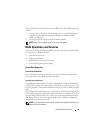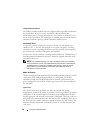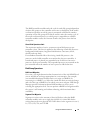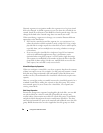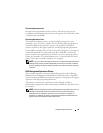
32 Using Your RAID Enclosure
RAID 5
RAID 5 uses parity and striping data across all physical disks (distributed
parity) to provide high data throughput and data redundancy, especially for
small random access. RAID 5 is the most versatile RAID level and is suited for
multi-user environments where typical I/O size is small and there is a high
proportion of read activity.
RAID 10
RAID 10, a combination of RAID 1 and RAID 0, uses disk striping across
mirrored disks. It provides high data throughput and complete data
redundancy. Utilizing an even number of physical disks (four or more) creates
a RAID level 10 disk group and/or virtual disk. Because RAID levels 1 and 10
use disk mirroring, half of the capacity of the physical disks is utilized for
mirroring. This leaves the remaining half of the physical disk capacity for
actual storage. RAID 10 is automatically used when a RAID level of 1 is
chosen with four or more physical disks.
RAID Level Usage
To ensure best performance, you should select an optimal RAID level when
you create a system physical disk. The optimal RAID level for your disk array
depends on a number of factors, including:
• Number of physical disks in the disk array
• Capacity of the physical disks in the disk array
• Need for redundant access to the data (fault tolerance)
• Disk performance requirements
RAID 0 is best used for video editing, image editing, prepress applications, or
any application requiring high bandwidth.
RAID 1 offers fast performance and the best data availability, but also the
highest disk overhead. It is best used for accounting, payroll, or financial
applications.
RAID 5 is best used for file, application, database, web, e-mail, news, and
intranet servers.
RAID 10 works well for medium-sized databases or any environment that
requires high performance and fault tolerance and moderate-to-medium
capacity.



